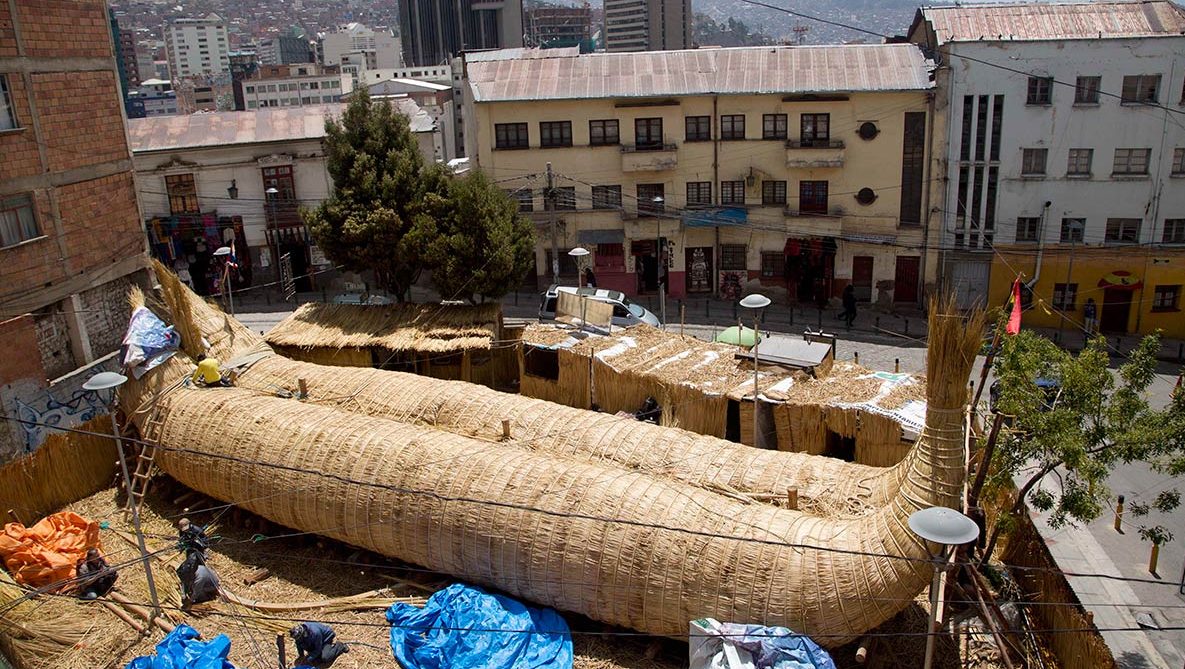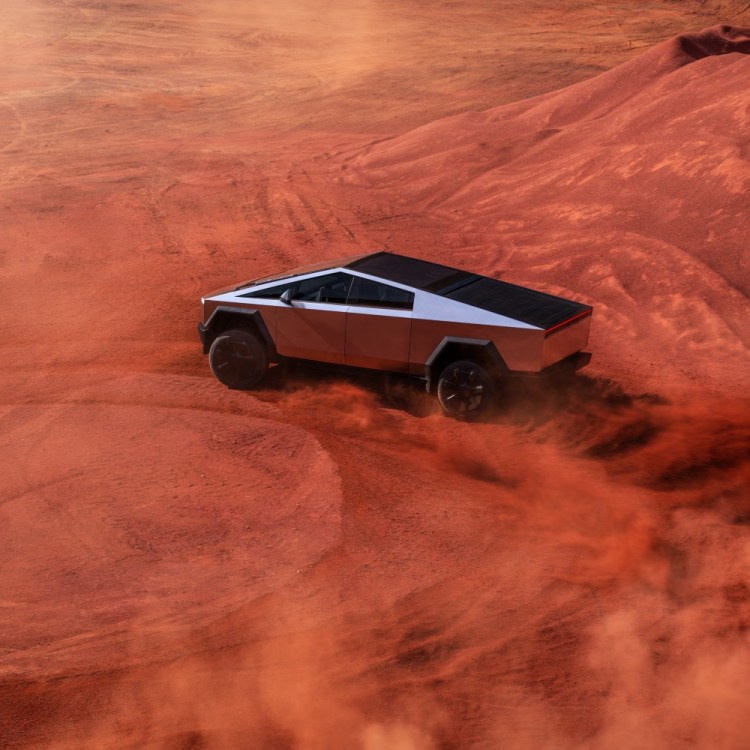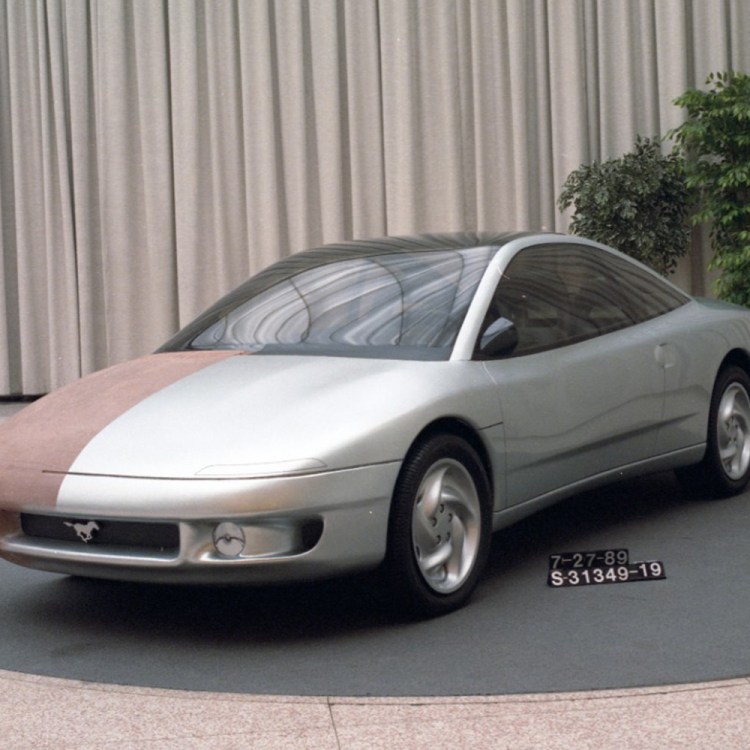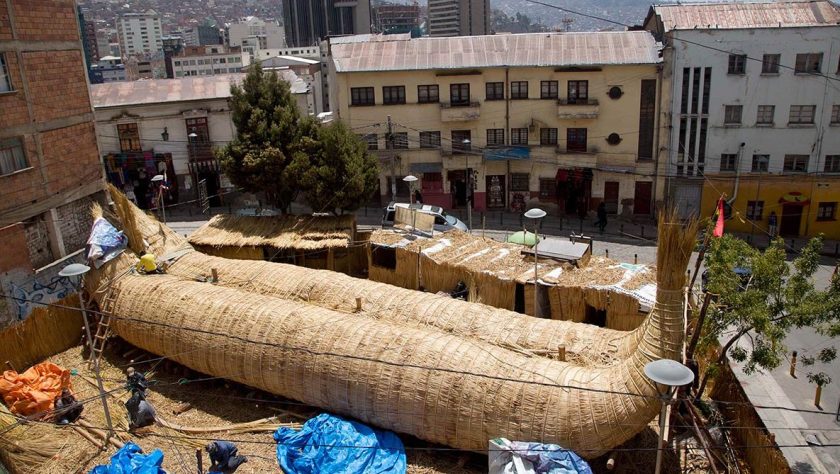
Eat your heart out, Tom Hanks’ character in Cast Away. An American explorer is preparing to cross the Pacific Ocean from South America to Australia in a gigantic reed boat built by Bolivian Aymara Indians. Yes, really.
But there is a point: The expedition seeks to prove that ancient sailors could have made such journeys across huge ocean expanses in reed ships, and that such vessels could have been a factor in human migration.
The American, a 51-year-old man named Phil Buck, leads the project. His boat is 60 feet long and is being built in La Paz, Bolivia, using techniques developed by the indigenous people of the Andes Mountains to sail the waters of Lake Titicaca. He plans to ship off from northern Chile in February with a crew of about ten men and cross more than 10,000 nautical miles to Sydney, Australia. He expects the voyage to take six months.
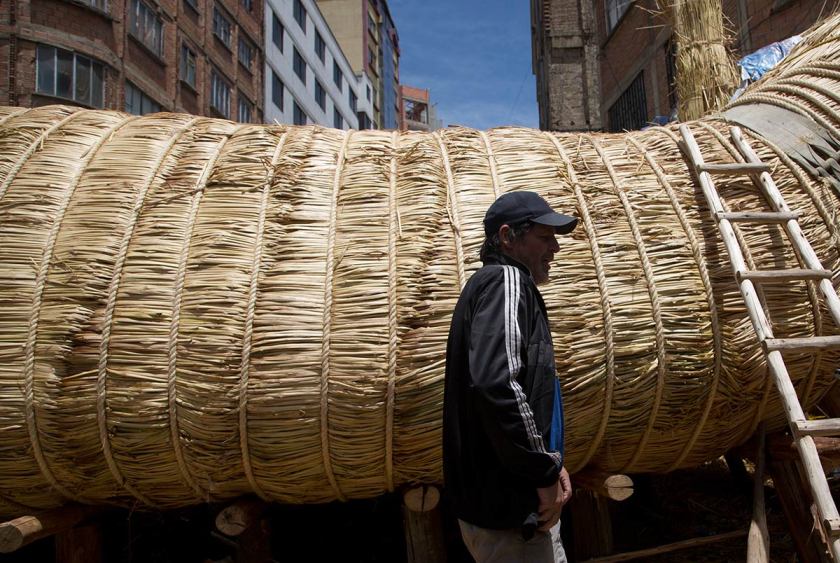
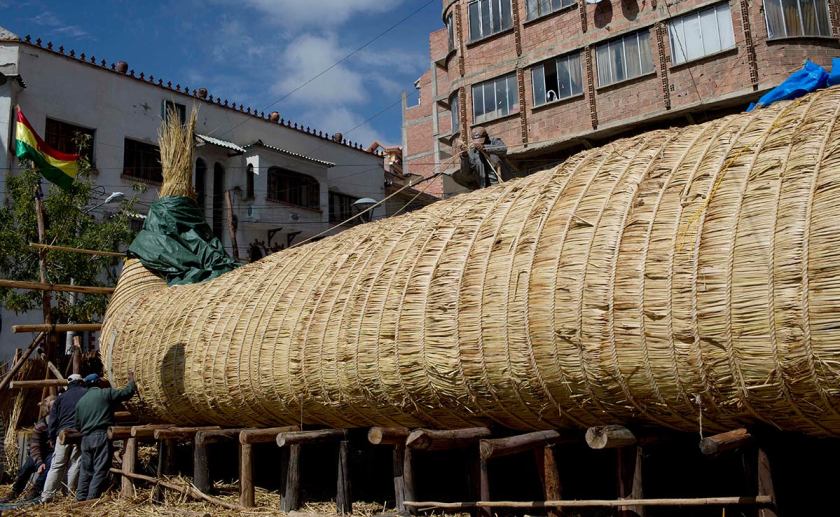
But this isn’t Buck’s first ambitious expedition. In 2000, he climbed aboard a reed boat and traveled 3,500 nautical miles from Chile to Easter Island. In 2003, he attempted to reach Australia but was interrupted by damage to the boat. “On this second try, I’m sure we’ll reach all the way to Australia,” Buck told the Associated Press.
During the trip, Buck and his men will navigate by the stars and currents and will survive on grains, including the Andean quinoa. The three-masted boat is being made from several tons of dried reeds of the totora plant, an indigenous Bolivian plant. The mighty vessel is called Viracocha III, named after the supreme Inca deity who is believed to have created the sun and the moon on Lake Titicaca.
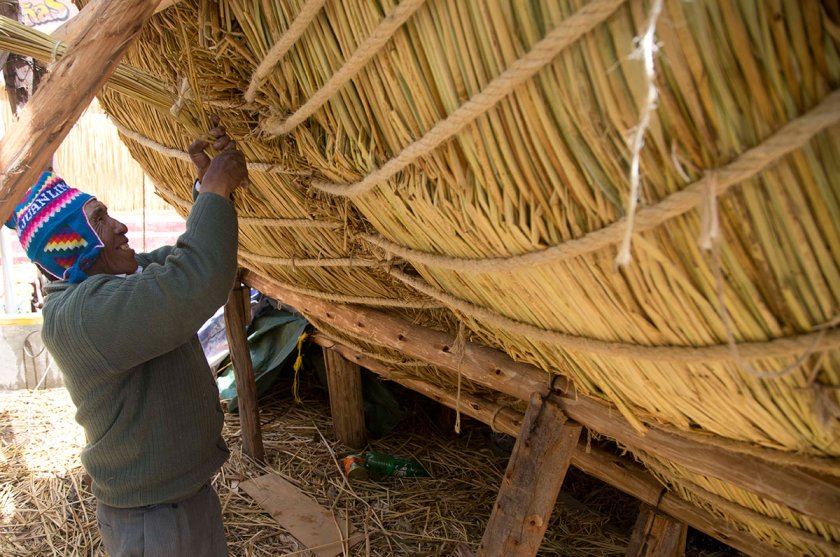
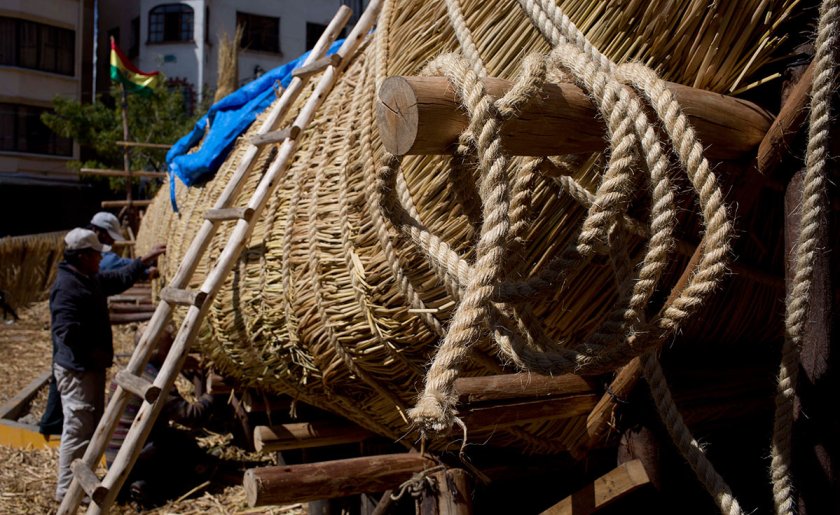
This article was featured in the InsideHook newsletter. Sign up now.
